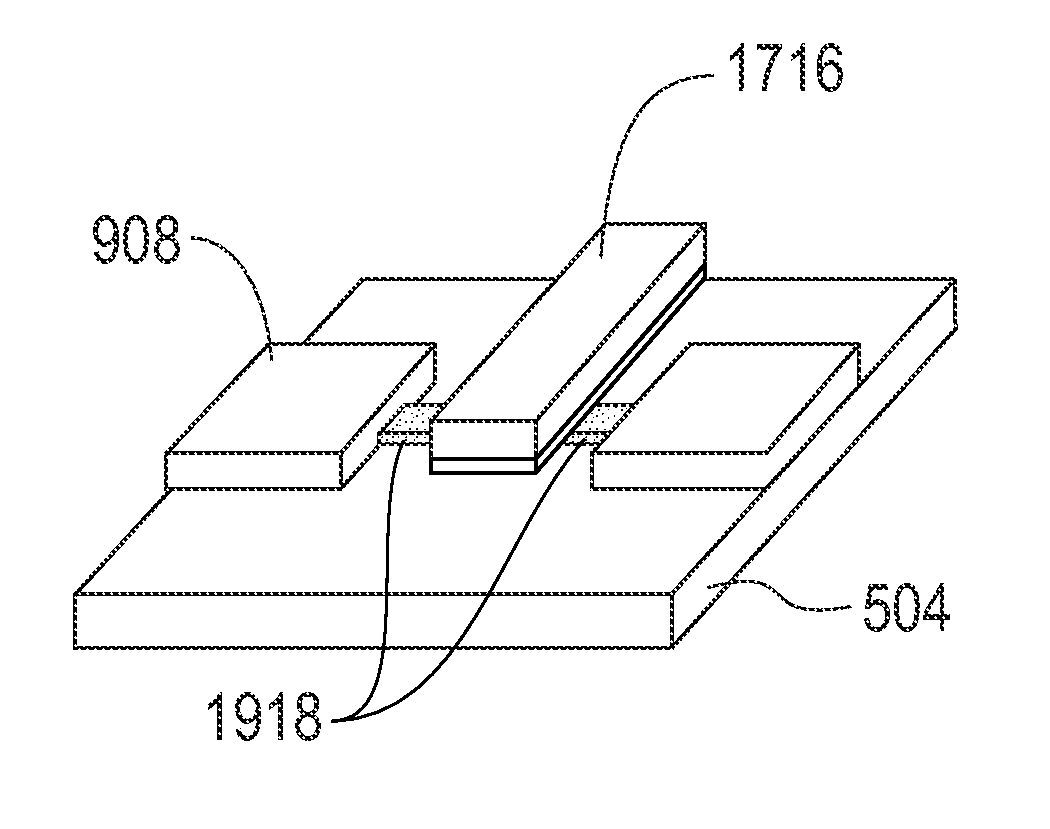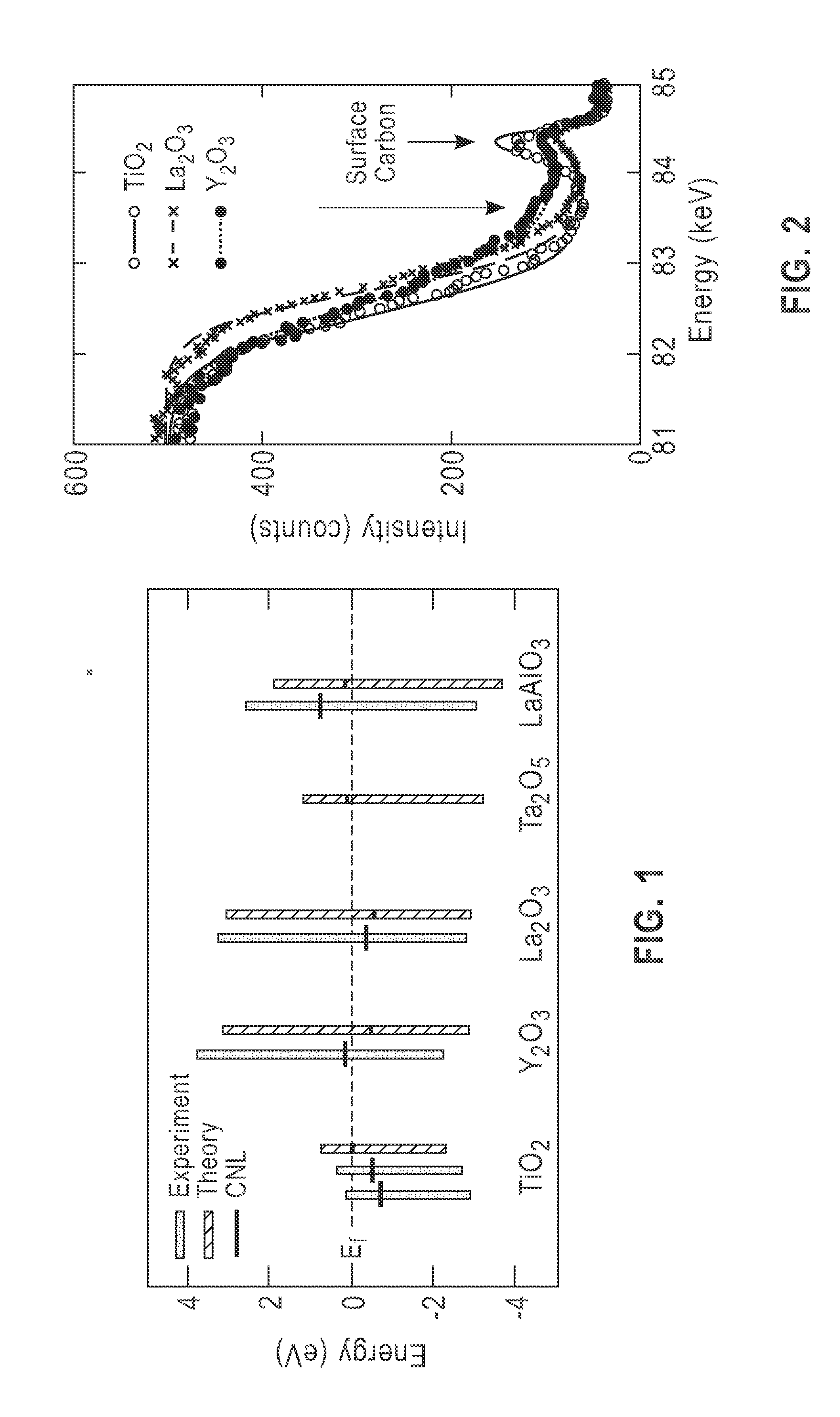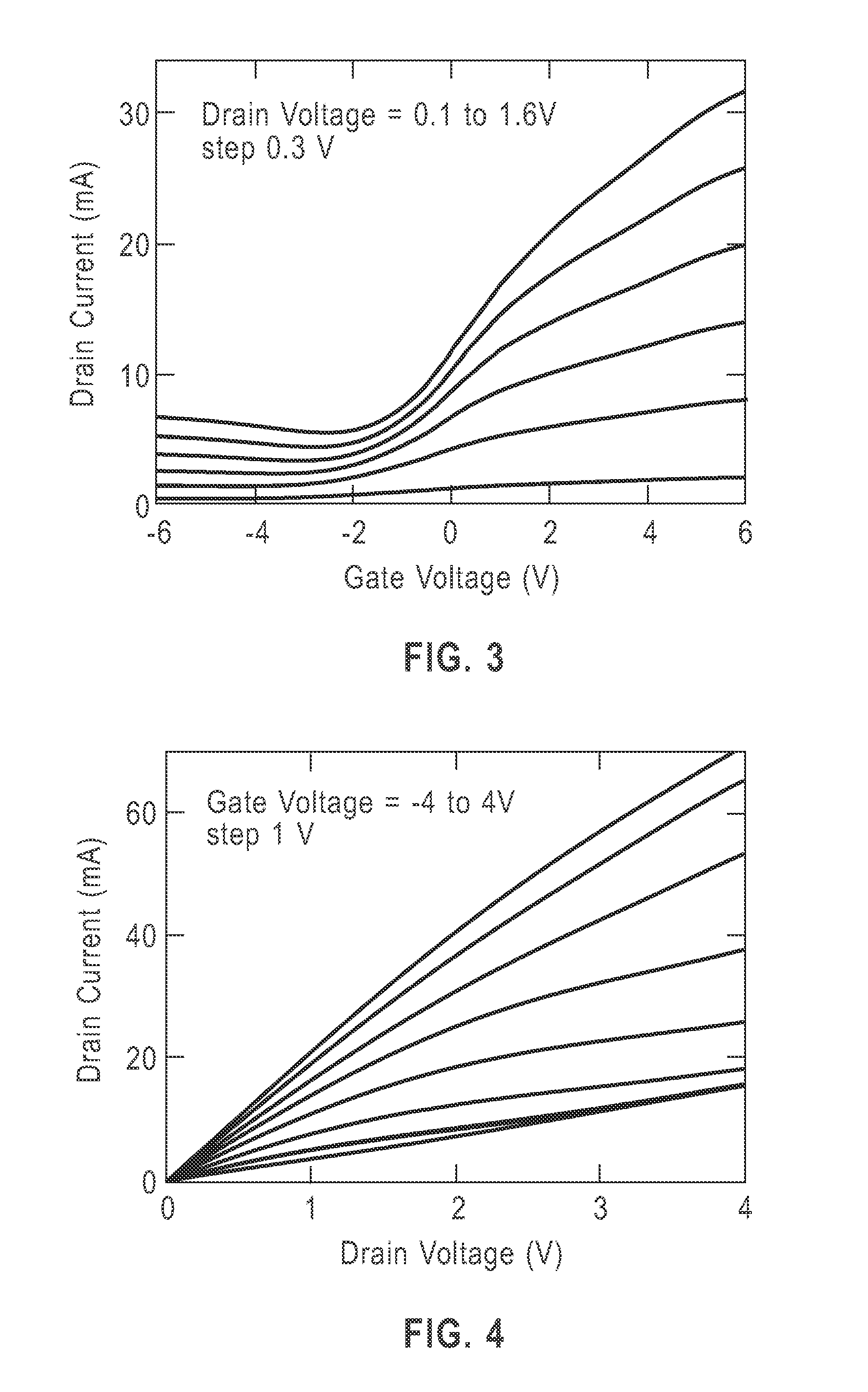Dielectric for carbon-based nano-devices
a carbon-based nano-device and dielectric technology, applied in the direction of nano-devices, semiconductor devices, electrical devices, etc., can solve the problems of graphene-channel devices and subsequent deposition of insulating layers,
- Summary
- Abstract
- Description
- Claims
- Application Information
AI Technical Summary
Benefits of technology
Problems solved by technology
Method used
Image
Examples
Embodiment Construction
[0029]Fabrication of a graphene channel FET requires a graphene (Gr) channel and a gate conductor with an intervening gate dielectric. The gate dielectric needs stop charge from leaking between the gate and the channel, and the dielectric should not contain charge internally. Dielectric (insulating) layers are difficult to deposit on a graphene channel because the carbon atoms in graphene have all their bonds to neighboring carbon atoms. Thus, there are no dangling bonds to nucleate growth of the insulating layer. Methods have been used to overcome this problem, such as use of a metal seed layer to promote growth, or deposition of an organic adhesion layer prior to insulator growth. In the former case, the shortcoming of the seed layer is that metal ions disrupt the graphene lattice, or serve as charged centers for carrier scattering, thus lowering the carrier mobility in graphene channel. Furthermore, it is difficult to insure that the metal seed layer does not migrate and form isl...
PUM
 Login to View More
Login to View More Abstract
Description
Claims
Application Information
 Login to View More
Login to View More - R&D
- Intellectual Property
- Life Sciences
- Materials
- Tech Scout
- Unparalleled Data Quality
- Higher Quality Content
- 60% Fewer Hallucinations
Browse by: Latest US Patents, China's latest patents, Technical Efficacy Thesaurus, Application Domain, Technology Topic, Popular Technical Reports.
© 2025 PatSnap. All rights reserved.Legal|Privacy policy|Modern Slavery Act Transparency Statement|Sitemap|About US| Contact US: help@patsnap.com



